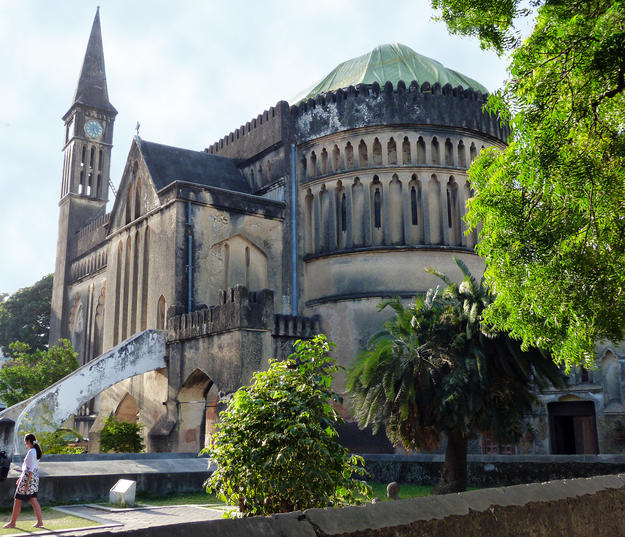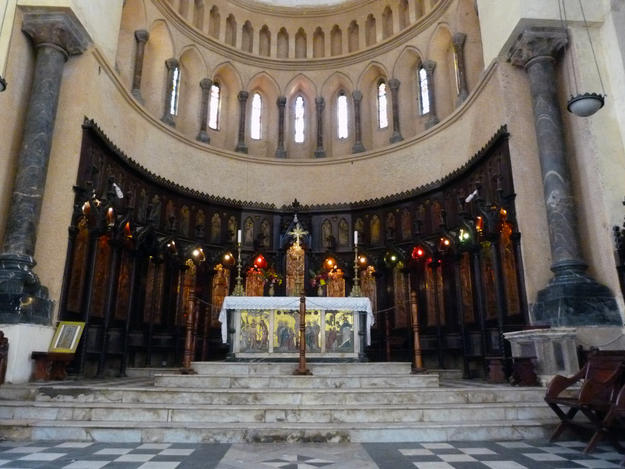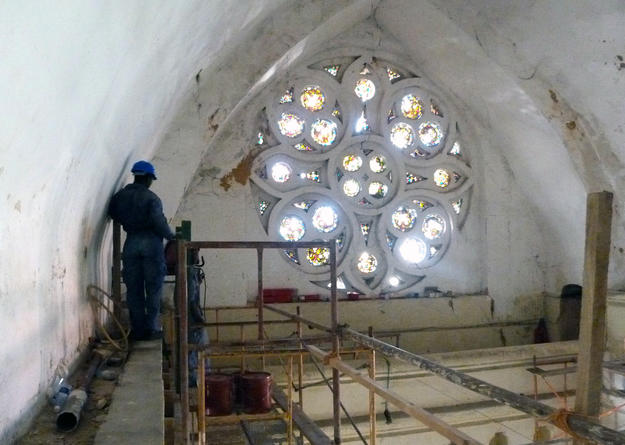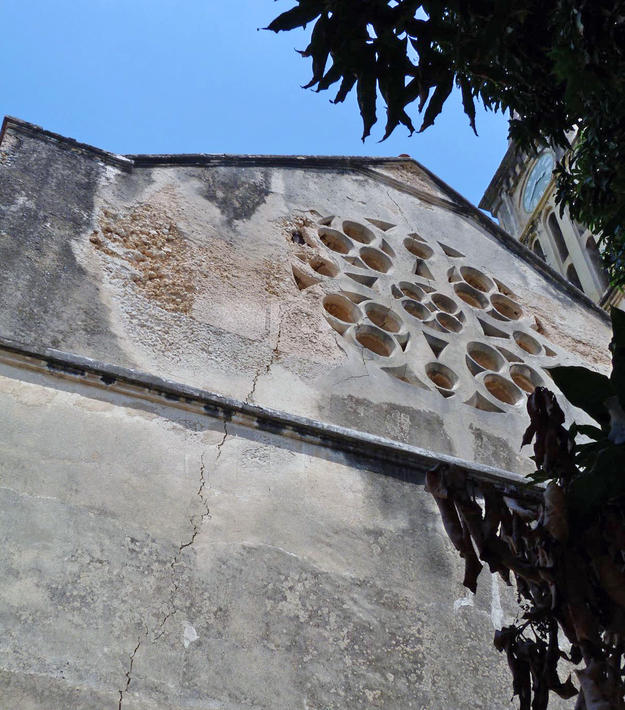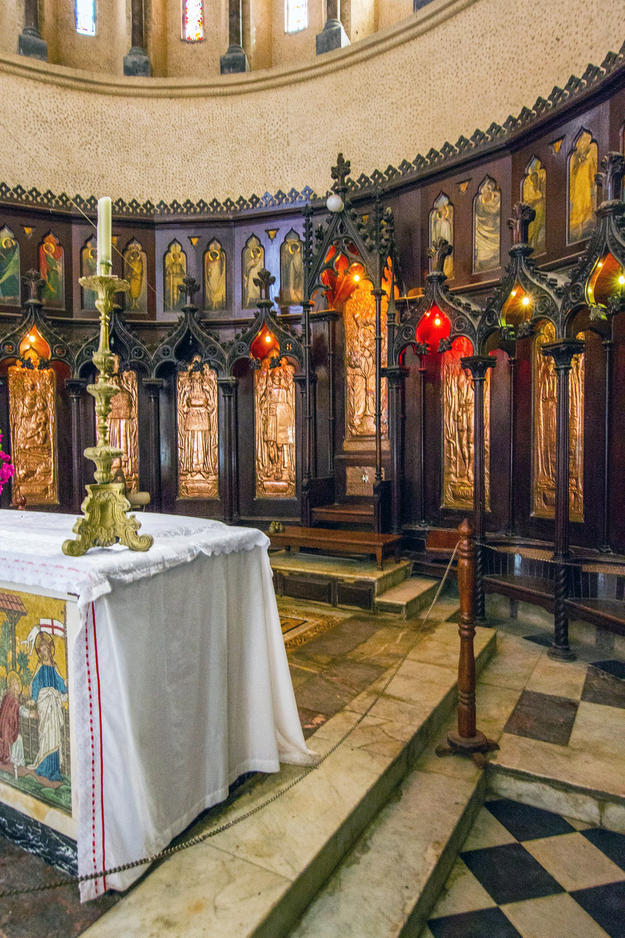Christ Church Cathedral and Former Slave Market Site
For centuries Zanzibar was the fulcrum of political and economic power in East Africa as well as the site of the region’s most notorious slave market. Slaves captured on the mainland were brought to Zanzibar in chains to be sold in the city’s slave market, often enduring horrific hardship on their journey. It is because the island was so central to the slave trade that it played such an important role in the abolition of slavery, not just in Africa but worldwide. The market was closed on the orders of the sultan in 1873, and in 1879 an Anglican cathedral was constructed at the site. The cathedral is thus a symbol of emancipation from a tyranny that affected all the people of the region. It is of immense cultural, historic, and moral significance, not just in East Africa but internationally. The cathedral is notable for its Saracenic design, which created a quintessentially Zanzibari eclecticism by fusing elements from Zanzibar and the Middle East with late Victorian Gothic and Arts and Crafts decorative motifs. The methods used to build the cathedral were also technologically daring for the time, stretching local coral construction to its limits. The nave’s unique barrel-vaulted concrete roof of crushed coral stone and imported Portland cement was designed and built before reinforced concrete technology was commonplace. Today the location of the former slave market is one of the most popular sites in Stone Town, receiving over 100,000 visitors per year. Stone Town was listed as a World Heritage Site in 2000, and the great wealth and diverse origins of its inhabitants led to the development of a unique cultural heritage in the area.
Conservation work
A detailed engineering study of the cathedral carried out in 2008 concluded that the structure was considerably compromised and interventions were necessary to ensure its survival. Another survey in 2012 found major cracks along the entire length of the vaulted nave roof and down the west gable wall of the building. The site was included on the 2014 World Monuments Watch, and in October 2013 WMF pledged our support to a project that would increase awareness of its significance while physically conserving the cathedral and establishing heritage and education centers nearby. The conservation work began in February 2014 with the stabilization of the roof, and by April 2014 the worst of the building’s exterior cracks had been grouted and covered by a new coat of plaster. The months that followed saw the repair of the rose window and the damaged sections of the exterior walls. At the beginning of the project the roof had been missing many tiles, allowing water to infiltrate the building’s interior. In June 2014 the damaged tiles were removed, and carefully-chosen replacements were completely installed by early 2015. Work on the interior was finished in June 2015 and included plaster repair, a paint finish, the installation of electrical wires, and cleaning of the original marble floor tiles. The conservation of the cathedral’s main body was completed in October 2015. With the conclusion of work on the spire at the end of August 2016, the entire cathedral was conserved to a high standard, exceeding the original objectives of the project.
The project at the former slave market site involved more than physical conservation, and included several training opportunities designed to build capacity in the local heritage sector. The Zanzibar Stone Town Heritage Society (ZSTHS) held two conservation training courses in July 2014 through which participants benefitted from the instruction of a skilled carpenter and learned to repair historic windows, doors, and more. ZSTHS, the Anglican Diocese and an Islamic property board called the Wakf and Trust Commission also selected eight young people to take part in a six-month heritage management course that commenced in March 2015. One year later ZSTHS held another conservation training session, and this time the focus was on masonry structures within Zanzibar. Participants were selected from organizations that either conserve or manage historic properties in the city. They were provided with both classroom instruction and hands-on experience at the exterior walls of St. Monica’s Hostel, which is adjacent to the cathedral.
A new exhibition preserve a symbolic site
The project continued with the creation of Heritage and Education Centers within St. Monica’s. The building was constructed as a hospital soon after the cathedral was completed, and today it is a listed monument. The Heritage Center was built to contain exhibits on Zanzibar’s rich history and diverse cultural heritage, including audio-visual recordings of local residents speaking about the significance of slavery’s legacy in their communities. It was linked to the Education Center, where learning opportunities on the same topics would be provided.
By February 2016 several rooms in the hostel had been preserved in order to prepare them for their new uses. The East African Slave Trade Exhibit (EASTE) at St. Monica's was installed to commemorate the abolition of slavery at the site of the former slave market. The exhibit opened at an official ceremony on June 15, 2016.
This project was designed to provide opportunities for public engagement through education and tourism, which have the potential to make a major impact in a city where an estimated 70% of residents earn a living through the tourism and service sectors. Creating a heritage center at the site of the former Zanzibar slave market reaffirmed the principles behind the abolition of slavery and celebrated diversity and tolerance.

